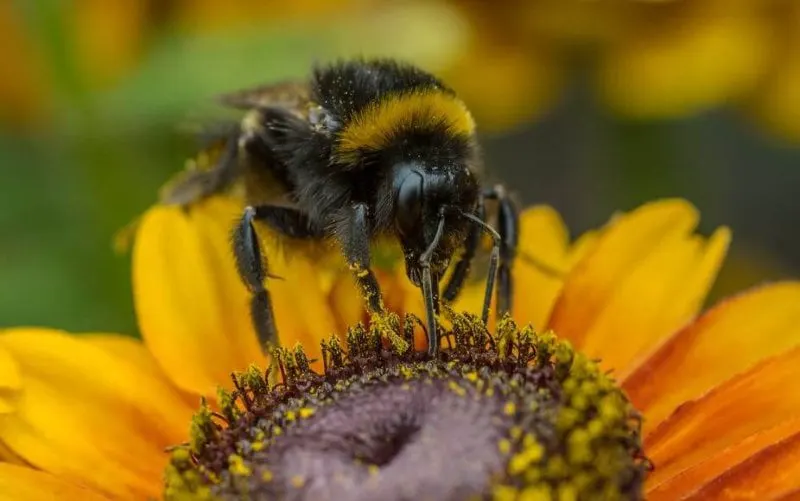‘Realistic’ exposure to insecticide sulfoxaflor poses no notable risk to honeybees, study shows
‘Realistic’ exposure to insecticide sulfoxaflor poses no notable risk to honeybees, study shows


Recent evidence suggests that one of the most prominent replacements of the banned neonicotinoids – the insecticide sulfoxaflor – harms bees and that fungicides may have been overlooked as a driver of bee declines. Realistic-exposure studies are, however, lacking.
Here, we assess the impact of the insecticide Closer (active ingredient: sulfoxaflor) and the widely used fungicide Amistar (a.i.: azoxystrobin) on honeybees in a semi-field study (10 flight cages containing a honeybee colony, for each of three treatments: Closer, Amistar, Control). The products were applied according to label instructions either before (Closer) or during (Amistar) the bloom of purple tansy.
We found no significant effects of Closer or Amistar on honeybee colony development or foraging activity. Our study suggests that these pesticides pose no notable risk to honeybees when applied in isolation, following stringent label instructions. The findings on Closer indicate that a safety-period of 5-6 days between application and bloom, which is only prescribed in a few EU member states, may prevent its impacts on honeybees.
However, to conclude whether Closer and Amistar can safely be applied, further realistic-exposure studies should examine their effects in combination with other chemical or biological stressors on various pollinator species.
Read the original post

 | Videos | More... |

Video: Nuclear energy will destroy us? Global warming is an existential threat? Chemicals are massacring bees? Donate to the Green Industrial Complex!
 | Bees & Pollinators | More... |

GLP podcast: Science journalism is a mess. Here’s how to fix it

Mosquito massacre: Can we safely tackle malaria with a CRISPR gene drive?

Are we facing an ‘Insect Apocalypse’ caused by ‘intensive, industrial’ farming and agricultural chemicals? The media say yes; Science says ‘no’
 | Infographics | More... |

Infographic: Global regulatory and health research agencies on whether glyphosate causes cancer
 | GMO FAQs | More... |

Why is there controversy over GMO foods but not GMO drugs?

How are GMOs labeled around the world?

How does genetic engineering differ from conventional breeding?
 | GLP Profiles | More... |

Alex Jones: Right-wing conspiracy theorist stokes fear of GMOs, pesticides to sell ‘health supplements’




 Trust issues: What happens when therapists use ChatGPT?
Trust issues: What happens when therapists use ChatGPT? Fighting deforestation with CO2: Biotechnology breakthrough creates sustainable palm oil alternative for cosmetics
Fighting deforestation with CO2: Biotechnology breakthrough creates sustainable palm oil alternative for cosmetics California, Washington, Oregon forge immunization alliance to safeguard vaccine access against federal undermining
California, Washington, Oregon forge immunization alliance to safeguard vaccine access against federal undermining Viewpoint — Fact checking MAHA mythmakers: How wellness influencers and RFK, Jr. undermine American science and health
Viewpoint — Fact checking MAHA mythmakers: How wellness influencers and RFK, Jr. undermine American science and health 30-year-old tomato line shows genetic resistance to devastating virus
30-year-old tomato line shows genetic resistance to devastating virus Viewpoint: Video — Big Solar is gobbling up productive agricultural land and hurting farmers yet providing little energy or sustainabilty gains
Viewpoint: Video — Big Solar is gobbling up productive agricultural land and hurting farmers yet providing little energy or sustainabilty gains The free-range chicken dilemma: Better for birds, but with substantial costs
The free-range chicken dilemma: Better for birds, but with substantial costs ‘You have to treat the brain first’: Rethinking chronic pain with Sanjay Gupta
‘You have to treat the brain first’: Rethinking chronic pain with Sanjay Gupta
